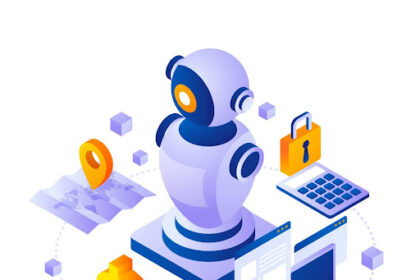This digital era is fascinating, technology is an indispensable part of education. It offers innovative ways to enhance learning, foster creativity, and build essential skills. Integrating the right technological tools into your child’s education can significantly boost their academic growth and prepare them for future challenges. Here, we explore the ultimate list of ten must-have technological tools that every parent should consider for their child’s education.
Interactive Learning Apps:
Interactive learning apps have transformed traditional education by making it more engaging and personalized. Apps like Khan Academy Kids, ABCmouse, and Duolingo provide a range of interactive activities tailored to different learning styles and levels.
Benefits of Interactive Learning Apps:
Engagement:
Keeps children interested with games and interactive lessons.
Personalization:
Adapts to the child’s learning pace and style.
Accessibility:
Available on various devices for learning anytime, anywhere.
Interactive learning apps turn education into a fun and immersive experience. They provide instant feedback, helping children stay motivated and track their progress.
E-Readers and Digital Libraries:
E-readers such as Kindle Kids Edition and digital library apps like Epic! offer children access to an extensive collection of books. These tools are excellent for improving reading skills and fostering a love for literature.
Why E-Readers and Digital Libraries are Essential:
Portability:
Thousands of books in one device.
Customization:
Adjustable text size and background colors to suit individual needs.
Interactive Features:
Built-in dictionaries and reading comprehension quizzes.
E-readers make reading more accessible and enjoyable. They encourage children to explore various genres, enhancing their vocabulary and comprehension skills.
STEM Kits:
Science, Technology, Engineering, and Mathematics (STEM) kits like those from LittleBits and LEGO Education provide hands-on learning experiences. These kits help children understand complex concepts through practical application.
Impact of STEM Kits on Learning:
Hands-On Experience:
Enhances retention by learning through doing.
Critical Thinking:
Develops problem-solving skills.
Collaboration:
Encourages teamwork and collaborative learning.
STEM kits are invaluable for fostering creativity and innovation. They help children build a solid foundation in essential STEM skills, crucial for future success.
Educational Robots:
Educational robots like Sphero, Ozobot, and LEGO Mindstorms introduce children to coding and robotics. These tools make learning about technology fun and accessible.
Benefits of Educational Robots:
Coding Skills:
Teach the fundamentals of programming in an engaging way.
Interactive Learning:
Children learn through play, enhancing understanding.
Future Readiness:
Prepares children for tech-driven careers.
Educational robots are excellent for developing logical thinking and problem-solving skills. They make complex concepts more approachable and exciting for young learners.
Online Tutoring Platforms:
Online tutoring platforms such as Outschool, Khan Academy, and Chegg Tutors provide personalized learning experiences. These platforms offer expert guidance in various subjects, catering to the individual needs of each child.
Advantages of Online Tutoring Platforms:
Personalized Attention:
One-on-one sessions tailored to the child’s needs.
Flexibility:
Children can learn at their own pace and schedule.
Wide Range of Subjects:
Access to tutors specializing in various fields.
Online tutoring platforms ensure that children receive the support they need to excel academically. They provide a flexible and effective way to address learning gaps and reinforce knowledge.
Virtual Reality (VR) Educational Tools:
Virtual Reality tools like Google Expeditions and Oculus Education offer immersive learning experiences. These tools allow children to explore different environments and concepts in a highly engaging way.
Why VR Educational Tools are Important:
Immersive Learning:
Provides a 360-degree learning environment.
Engagement:
Highly interactive and captivating.
Exploration:
Enables exploration of places and ideas that are otherwise inaccessible.
VR tools make learning more memorable and impactful. They provide unique opportunities for children to engage with educational content in a dynamic and interactive manner.
Educational YouTube Channels:
YouTube hosts numerous educational channels that provide high-quality content across various subjects. Channels like CrashCourse, National Geographic Kids, and SciShow Kids offer engaging videos that complement traditional learning.
Benefits of Educational YouTube Channels
Visual Learning:
Helps visual learners grasp complex concepts.
Accessibility:
Free and available on multiple devices.
Diverse Content:
Covers a wide range of topics and subjects.
Educational YouTube channels are an excellent resource for enhancing understanding and retaining information. They make learning fun and accessible for children of all ages.
Learning Management Systems (LMS):
Learning Management Systems like Google Classroom, Seesaw, and Schoology streamline the educational process. They provide a centralized platform for assignments, resources, and communication.
Importance of Learning Management Systems:
Organization:
Keeps all learning materials in one place.
Communication:
Facilitates interaction between teachers, students, and parents.
Progress Tracking:
Allows monitoring of student performance and progress.
LMS platforms are essential for managing remote and hybrid learning environments. They ensure that children stay organized and on track with their studies.
Educational Podcasts:
Podcasts like “Brains On!”, “Wow in the World”, and “But Why: A Podcast for Curious Kids” are excellent tools for learning on the go. These shows cover a range of educational topics in an engaging audio format.
Why Educational Podcasts are Valuable:
Flexibility:
Can be listened to anywhere, anytime.
Engagement:
Keeps children engaged with storytelling and discussions.
Variety:
Offers diverse topics and subjects.
Educational podcasts are a great way to stimulate curiosity and learning outside of traditional settings. They encourage children to explore new ideas and concepts in a fun and accessible way.
Smart Home Devices for Learning:
Smart home devices like Amazon Echo and Google Home can be powerful educational tools. These devices can set reminders, answer questions, and even help with homework.
Benefits of Smart Home Devices:
Convenience:
Provides quick answers and assistance.
Interactive Learning:
Engages children with interactive content.
Support:
Helps with organization and scheduling.
Smart home devices are excellent for supporting daily learning routines. They make it easy for children to access information and stay organized.
Conclusion:
Implementing these ten must-have technological tools into your child’s education can significantly enhance their learning experience and development. From interactive learning apps and e-readers to STEM kits and educational robots, these tools provide diverse, engaging, and effective ways to support your child’s academic growth. Embrace these innovations to ensure your child is well-equipped for the future, fostering a lifelong love for learning and development.







